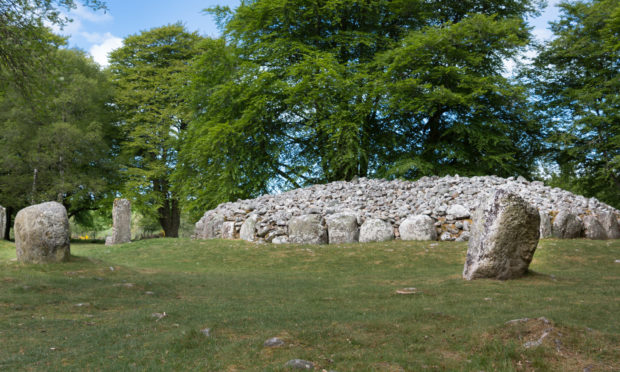Members of the public have submitted more than 900 photographs of an historic Scottish site linked to hit drama series Outlander, to a project designed to help preserve its future.
Clava Cairns, a Bronze Age burial ground near Inverness, is believed to be the inspiration for Outlander’s fictional Craigh na Dun, the mysterious stone circle where WW2 combat nurse Claire, played by Caitriona Balfe, is swept back in time to the 18th century and the eve of the Battle of Culloden.
The TV series, which also stars Scottish actor Sam Heughan, has been credited with attracting many thousands of visitors to the 4000-year-old site, but the dramatic increase in footfall caused by the “Outlander Effect” has also led to erosion and other damage.
A conservation project, Monument Monitor, run by Historic Environment Scotland (HES) and University College London (UCL), uses visitor photographs to monitor changes at remote heritage sites.
Organisers of the scheme said people had now submitted over 900 images from photograph albums and memory sticks, showing Clava Cairns spanning more than 40 years.
Project coordinator Rosie Brigham, of the Institute of Sustainable Heritage at UCL, said snaps from before 2014, when the TV adaptation of Diana Gabaldon’s bestselling Outlander novels was first screened, were particularly useful to help gauge the impact of visitors on the site and shape its future conservation.
She said: “The response has been really good. We’ve had submissions from all over the world, from people in America, Sweden and all over the UK — many of them with lovely stories and glimpses into people’s holidays over many years.
“Many of these shots have been taken from similar viewpoints, of the entrance to the cairns and the large standing stones.
“By looking at these pictures and the dates they were taken, we can see the erosion pre and post Outlander and look at whether management could be changed.”
